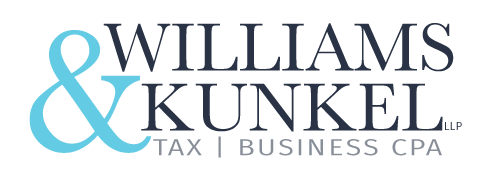Nobody likes to pay more taxes than they have to. But there’s also a danger of letting the “tax tail wag the investment dog,” to quote a common saying. (Flower Mound CPAs: Balancing Tax Savings with Investments)
You shouldn’t try so hard to cut income or capital gain taxes that it leads you to make unwise decisions. For example, you could wind up settling for lower yields or wait unnecessarily to sell your home.
The following are some investment strategies that, while not necessarily bad and are often pretty wise, can be taken to extremes:
Failing to rebalance because of taxes
If you’re sitting on stock-market gains, it’s often smart to delay selling. Doing so can push the tax bill into a future year and might qualify you to pay lower capital gain rates (topping out at 15% for most Americans) rather than higher rates as ordinary income.
The problem comes when delaying a sale changes your investment profile. Say you started with a 50-50 balance of stocks and bonds and haven’t adjusted it for many years. If so, your stock holdings almost certainly would have climbed much more than the bonds over that span. This makes your portfolio stock-heavy and increasingly risky.
Rebalancing is the process of periodically taking some profits from your winners and reinvesting the proceeds in other assets that haven’t fared as well. It can help maintain your desired asset mix and keep your portfolio from getting out of whack. Like, for instance, when stock investments are performing much better than bonds.
That’s why we recommend balancing, even if it means paying taxes on capital gains. Yet many investors avoid selling just so they don’t need to pay taxes sooner than necessary.
One obvious solution is to hold investments you might want to rebalance within Individual Retirement Accounts and workplace 401(k) plan — two examples of tax-sheltered accounts where you wouldn’t trigger taxes when rebalancing.
Review your asset allocation once a quarter and rebalancing if the mix deviates more than five percentage points from your target. If your goal is to maintain a 50-50 mix of stocks and bonds and you’re now at 60-40, it would be time to trim your stock holdings and divert the proceeds into bonds.
Holding everything in a 401(k) plan or IRA
There’s much to like about tax-sheltered retirement accounts, especially when it comes to rebalancing. Another nice aspect with 401(k) plans is that you might qualify for employer matching funds to complement what you contribute. And with both 401(k) plans and IRAs, you might be able to deduct your contributions. Plus, you get tax-sheltered growth along the way.
So what’s wrong with socking all your investment dollars into IRAs or 401(k) plans? It doesn’t provide much tax-account diversification, let alone liquidity.
Money you withdraw from traditional IRAs and 401(k)-style plans is taxed as ordinary income. That means you wouldn’t be able to take advantage of lower capital-gain rates on investments held many years. Plus, pulling out 401(k) or IRA money before age 59 1/2 could trigger a 10-percent early withdrawal penalty.
The solution is holding some of your investments in taxable accounts, such as stocks that don’t pay dividends and tax-efficient mutual funds.
If an emergency arises or you need to make a big-ticket purchase, you will be thankful to have money on the side to pay the bill. Plus, your unsheltered investments could qualify for lower capital-gain treatment. In short, it’s wise to diversify your investments from a tax standpoint, not just in terms of assets and risks.
Roth IRAs provide further tax diversification, as the money in these accounts can be withdrawn free of taxes and penalties, subject to certain restrictions.
Ideally, you’ll have some Roth IRA money, some traditional-IRA and 401(k) money, and some taxable investments.
Investing blindly in municipal bonds
Bonds issued by cities, counties and state-government entities come with a favorable feature — the interest paid generally avoids federal income taxes. If the bonds also were issued in your state, you likely could reap a state exemption, too. These tax-saving aspects also apply to mutual funds and exchange-traded funds that hold muni bonds.
But while tax-free income is desirable, investors pay a price in generally lower yields. In particular, corporate bonds of similar quality and years to maturity typically yield more. So too for many bonds issued by foreign governments.
Because yields are so low now on highly rated munis might be reason to favor high-yield municipal funds, where the credit quality is somewhat less but the interest payments somewhat higher.
Otherwise, in the current low-rate environment, you might have to accept muni yields in the range of 1% or 2%. This makes it hard just to keep pace with inflation. Muni-bond investors face a trade-off for collecting tax-free interest, and it’s especially acute now.
Striving too hard for tax-free profits on a home
An especially valuable benefit for homeowners is the ability to skirt taxes when selling a dwelling.
In general, to qualify, you just need to have owned and lived in a home for at least two of the five years prior to sale. Single homeowners can exclude up to $250,000 in primary-home profits, and married couples can avoid up to $500,000.
That’s a huge tax break and one for which it could be highly advantageous to delay a home sale. The flip side is that your gain might not be large enough to justify delaying. Especially, if you’re ready to move and can take advantage of a seller’s market.
It’s not just a question of subtracting your purchase price from the sales price to determine your profit. Rather, you also subtract various expenses that can whittle down your taxable gain, before that $250,000/$500,000 exemption kicks in. These include commissions to sell the property, other marketing costs and improvements you made over the years that add to your “basis” or untaxed gain.
Improvements cited in Internal Revenue Service Publication 17, which explains housing gains and losses, include room additions, new plumbing, a new fence or new roof.
After subtracting these costs, which can total tens of thousands of dollars, you might not have a taxable gain anymore and, consequently, no reason to delay putting the home up for sale.
Call Williams & Kunkel CPA today in Flower Mound at 972-446-1040 to have a chat and find out how you can save money on your taxes as a real estate professional.
In addition, you can connect with us to receive updates throughout the business week by following us on Twitter or LinkedIn or liking us on Facebook.
Source: USA Today

